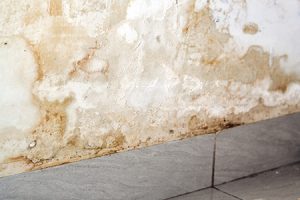How to Stop Water Damage in Your Bathroom
How to Stop Water Damage in Your Bathroom
Blog Article
The content which follows involving How to Prevent Bathroom Water Damage is exceptionally informative. You should check this stuff out.

The restroom is exceptionally vulnerable for damp buildup and prospective water damages due to the regular use water in it. This write-up provides basic assessment strategies to help discovering water damage risks.
The constant use water in the bathroom makes it incredibly prone for wet accumulation and prospective water damages. By evaluating it regularly, you can decrease water associated problems.
The adhering to collection of inspections is easy to carry out as well as need to be done as soon as in every three months in order to keep your restroom in good shape as well as to avoid prospective water problems brought on by the bath tub, the shower, pipeline joints and plumbing, sinks, cabinets, and the toilet
Do not overlook carrying out these assessments as well as be complete while executing them. Remember that these straightforward examinations can conserve you a great deal of cash by giving very early signs for water damages
Sinks and also Cabinets
Sinks and also closets are revealed to dampness and also moisture everyday as well as are typically ignored. Examine frequently under the sink as well as on the counter top above it. Repair any drip in the catch as it might recommend drain issues. Take a look around the sink, slow draining pipes may indicate a blocked drainpipe. Change sink seals if they are split or loosened.
Tub and Shower
The shower and bath tub call for special attention and upkeep. Check the tiles and also change if broken. Ensure that there is no missing cement in between the ceramic tiles. Inspect and also change broken caulking at joints where the walls fulfill the flooring or the tub. Clogged drains pipes as well as pipes troubles will certainly avoid the bathtub from drying out as well as may show severe problems under the tub. Consult with an expert instantly to avoid structural damages. Pay attention to discolorations or soft locations around the tub walls as they might indicate an inner leakage.
Plumbing
Signs for water damage are tough to spot given that many pipelines are installed inside the wall surfaces.
Pay unique interest to floor covering and wall surfaces moisture as well as discolorations as they may show an unnoticeable plumbing trouble. Check wetness degrees in adjoining spaces as well.
The Bathroom
The commode is a vulnerable water joint. Examine the water lines and search for leakages around the toilet seat, in the pipe, and under the water storage tank. If you detect any type of signs of wetness on the flooring around the commode, check for leakages in the toilet rim as well as container seals.
Understand that hanging commode bowl antiperspirants increases the possibilities for obstructions.
How to Prevent Bathroom Water Damage Caused By Your Plumbing
Prevent Water Damage Caused by Your Plumbing
There are many things you can do to prevent water damage in your bathroom. Let's take a look at a few actions you can take:
Shower and Tubs
Inspect tiles to see if any are missing or cracked. Check grout areas to see that the grout is not missing. Water can seep behind tiles and damage the wall if tile and grout is not in good shape. Don't let water sit in the tub. Standing water can find ways to get around a faulty drain. Check out caulking around tubs and showers and replace or repair any areas that may allow water to seep through. Dry the floor immediately after bathing or showering. Don't let water sit on the floor. Use the exhaust fan to pull moist air out of the area. Keep the room as dry as possible. Sinks and Cabinets
These are exposed to moisture every day. Inspect them often to see that there are no leaks or moisture issues that might cause problems. If the trap has a leak or any moisture around it this could indicate a problem with your plumbing in Chico. Somewhere in the system there has to be excess moisture. Get this looked at. Any drips from faucets need to be repaired. Small leaks lead to larger leaks and bigger problems. Check seals and grout around sinks also. If they are cracked, broken or simply missing replace or repair them. Toilets
The seal on the bottom of the toilet needs to be inspected regularly. If you see water near the base of the toilet have the seal replaced. Make sure the tank does not leak. If you hear the tank filling for no reason you know there is a leak. This constant water drip can cause damage to the toilet and any others near it that stay wet. Check water lines leading to the toilet. These can often leak and cause damage if left unchecked.

I hope you liked our excerpt about Common Causes of Water Damage in a Bathroom. Thank you for spending some time to browse our posting. Remember to take the opportunity to promote this blog post if you enjoyed reading it. We recognize the value of reading our article about How to Prevent Bathroom Water Damage.
This Page Report this page